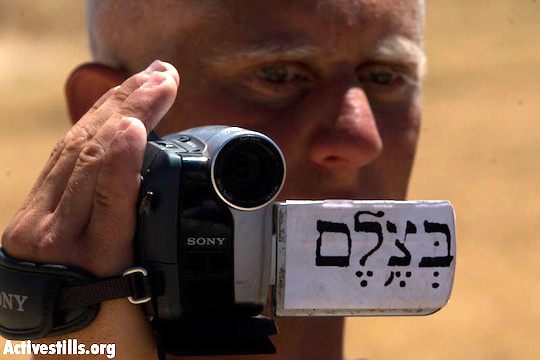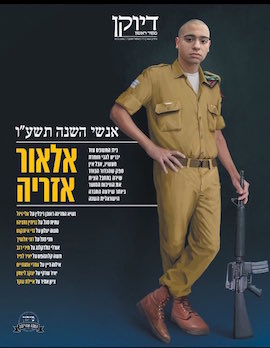If B’Tselem volunteer Imad Abu Shamsiyeh hadn’t been in Hebron with his camera ready that March morning, we would have long forgotten about just another ‘neutralized terrorist,’ and none of us would have ever heard the name Elor Azaria.
By Yael Marom

If an Israeli soldier shoots a Palestinian in the head in Hebron, and there’s no camera to film the act, does he still become “man of the year?”
The Israeli media this week ran its usual year-end features ahead of the Jewish New Year, Rosh Hashanah. Two Israeli media outlets, Channel 10 and Sheldon Adelson-owned Makor Rishon, selected as one of their people of the year Elor Azaria, the Israeli soldier who shot and killed a disarmed and disabled Palestinian attacker in Hebron.
In a Channel 10 television item, Azaria was presented as a pawn caught in between politicians and the security establishment. The item featured emotional interview with his father from a few months after the deadly shooting.
The cover of the holiday edition of Makor Rishon‘s weekly magazine featured Azaria’s image, with a sub-headline noting that he “sparked the stormiest argument in Israeli society this year.”
But actually, the person responsible for turning the “Azaria incident” into the story of the year is the man who filmed it: B’Tselem volunteer Imad Abu Shamsiyeh. Without Abu Shamsiyeh’s camera having been pointed in the right direction at the right time, the story would have ended exactly as it was reported by Channel 10 and so many other news outlets that March morning: “Soldier lightly wounded in Hebron stabbing, the terrorists were killed.”
Azaria was not the first — nor will he be the last — Israeli soldier during the violence of this past year to shoot a Palestinian attacker who no longer posed a threat. But he was the only one to find himself caught on film so blatantly, and not by CCTV cameras controlled by the Israeli army or police, who only release those videos that serve their interests.
In Makor Rishon, the people-of-the-year cover story argued that: “due to Azaria’s aim, the IDF and Israeli society as a whole were reconcile good and evil, standing with our troops vs purity of arms, morality and Judaism.”
But the aim that actually changed the course of events, which made the shooting exceptional and put it into the national spotlight, was the viewfinder on Abu Shamsiyeh’s camera that just happened to be in the right place at the right time that day. Without it, Azaria would likely have joined a long list of soldiers and officers who have shot and killed Palestinians who posed no danger at the time, and who went on with their lives and military service as if nothing happened.
The IDF has still not released CCTV footage of the deadly shooting of Hadeel Hashmaloun in Hebron last September, despite the fact that it itself ruled the killing could have been avoided, but that the soldiers will not stand trial.
Israeli authorities have still not released CCTV footage documenting the killing of two Palestinian siblings at the Qalandiya checkpoint in April. The list goes on and on. Not to mention the countless shootings in which there was no video footage to release — or bury.
Perhaps between the lines of the media coverage and the public debate surrounding Elor Azaria this past year has been a bitter and resounding resentment: “Who gave them video cameras?”
Yael Marom is Just Vision’s public engagement manager in Israel and a co-editor of Local Call, where this article was originally published in Hebrew.



